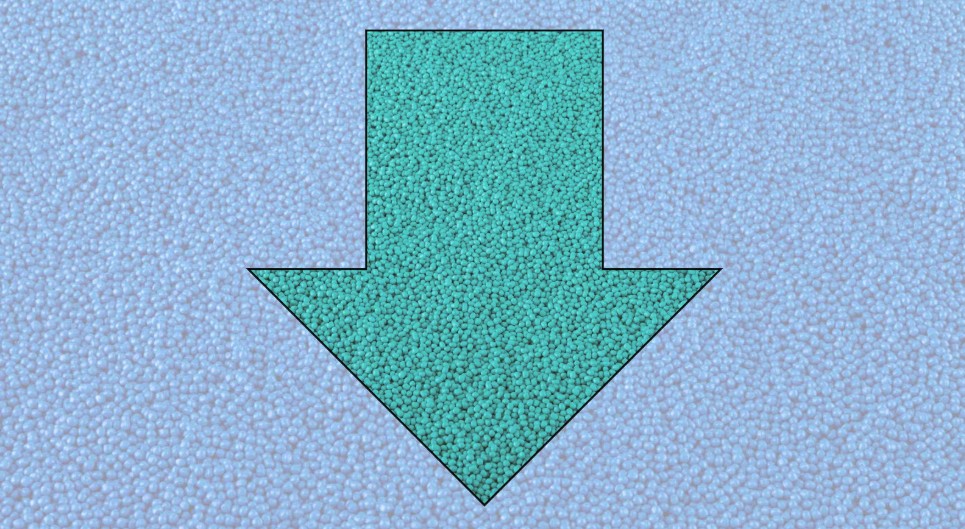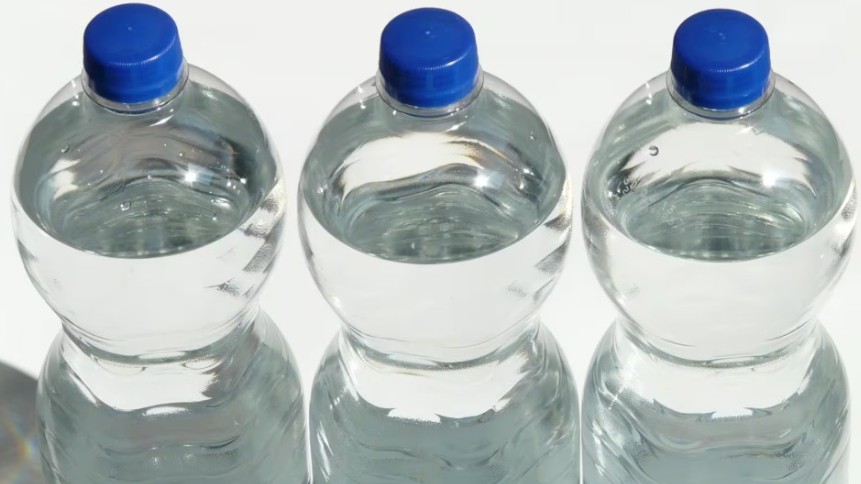Market trends
Opportunities soar in North American plastics market
작성자 : Aeyoung Park
2018-05-15 |
조회 : 4091
Opportunities soar in North American plastics market
The US, Canada and Mexico are the most important plastics markets in the North American continent. The plastics industries in these three countries are expected to set high due to different reasons. Nevertheless, the NAFTA negotiation is critical in the development process of this regional market.
Growth remains strong for the US plastics industry
The Plastics Industry Association (PLASTICS) released its 2017 Size & Impact Report recently and found a positive outlook for the U.S. plastics market. Overall industry growth is expected.
For years the plastics industry has maintained its position as the third-largest manufacturing sector in the US, behind oil and gas extraction and automobiles, and this trend continued in 2016.
The report notes that the U.S. plastics industry remains historically strong and well positioned for continued growth.
The industry’s shipments were worth US$404.4 billion in 2016, down 3% from the previous year. Lower raw material costs and low oil and natural gas prices primarily drove the decrease in shipment value.
Value went down is not a significant issue because volumes continued to grow, said PLASTICS President and CEO William R. Carteaux.
“Things have been on the increase the last few years,” Carteaux said in a webinar releasing the report. “There are lots of reasons for optimism in manufacturing right now.”
The association’s presentation also included an analysis from the American Chemistry Council tracking plastics processor investment, noting 560 investments in expansion or new construction, with the most coming in Ohio, Michigan, Indiana, Wisconsin and Texas.
US plastics job numbers up
“More people are working in the plastics industry and that’s a testament to plastics’ economic vitality and innovation,” said Carteaux.
The U.S. plastics industry employed 965,000 workers in 2016, up 1% from the previous year.
At the state level, California had the most plastics workers. California took over the top spot from Texas, leading the way with 77,000 plastics jobs. Meanwhile, California also hosted the largest number of plastics companies.
Ohio took over the second on the list with 75,200 jobs, while Texas dropped to third with 74,800.
PLASTICS notes that employment figures in U.S. plastics should continue to grow, but that the rate of growth will decline over the next few years. The reason for this decline is the skills gap and an ever-deepening shortage of qualified workers.
Therefore, the association reminds that the US must do a better job of training workers to fill the jobs that are available today and will be available tomorrow.
Positive forecasts reinforced by federal tax reform
Perc Pineda, Ph.D., Chief Economist with PLASTICS, has developed a general outlook for the plastics industry, as well as numerical forecasts for employment and shipments. The following are some key points:
The US domestic plastics market is expected to continue growing in step with an economy that is growing steadily.
Headwinds will come from skilled labor shortages, a maturing motor vehicle replacement cycle and a housing construction cycle that is not too far from peak sustainable levels.
Tailwinds will likely come from improvements in manufacturing trade, including new foreign-owned manufacturing plants in the US, and also from new plastic resin capacity being built in response to new hydrocarbon feedstock supplies in the US.
Because of labor shortages, all manufacturing facilities, including those involved with plastics, are expected to increase their investments in labor-saving equipment and technology.
Real plastics industry shipments (after correction for inflation) are expected to grow 2.0% in 2017, 2.2% in 2018 and 2.5% in 2019. The principal source of the acceleration is the construction of new resin plants in the US.
Meanwhile, the recent US federal tax reform is generally regarded as favorable to the development of manufacturing industry in the country, including the plastics sector. Among the changes, the reduction of corporate tax rate would clearly be most beneficial, pushing enterprises’ earnings into the red and strengthening their commitment in the US.
ExxonMobil, being one of these enterprises, is planning to invest over US$50 billion in the US over the next five years to increase production of profitable volumes and enhance its integrated portfolio, which is supported by the improved business climate created by tax reform.
Canada focuses on niche products
Canada’s chemicals and plastics sector has been supported by secure access, low priced raw material and infrastructure.
According to its latest report, IBISWorld anticipates that the plastic and resin manufacturing industry in Canada will continue to grow over the five years to 2022, albeit at a much slower pace compared with the previous five-year period. Slowed growth will be due, in part, to an appreciating Canadian dollar.
Besides, industry performance is highly susceptible to economic conditions abroad, most notably in the US. Nevertheless, downstream demand will drive growth as per capita disposable income and consumer spending rises.
IBISWorld estimates that the plastic and resin manufacturing industry in Canada exhibits a low level of market share concentration, with the top four players accounting for an estimated 29.2% of total industry revenue in 2017, a figure that has remained fairly stable over the five years to 2017.
The rest of the industry is composed of small- to medium-sized manufacturers who have developed strategies of supplying niche products to compensate for their lack of economies of scale.
The plastics industry in Canada is highly competitive when considering the fact that the bulk of demand for their products is from outside nations, such as the US.
Canada’s chemical sector alone is forecast to increase by 27% by 2020, according to Canadian Trade Commissioner Service.
Increasing demand for overseas suppliers in Mexico
Mexico’s economy grew 2.3% in 2016 and the plastics industry grew 5.7%, according to the Mexico’s Secretariat of Economy. By the end of 2016, the country’s imports of capital equipment used in the plastics industry amounted to US$2.7 billion.
Mexico is the largest destination for plastics and rubber equipment, tools, dies and industrial molds exported from the US. Besides, Mexico was the second largest destination for the US exporters of plastic products in 2016, according to the Office of the United States Trade Representative.
In its latest study, The International Trade Administration of The U.S. Department of Commerce reported that, although Mexico’s plastics industry’s growth is currently moderate compared to past decades, manufacturers see an opportunity to rebound to higher growth rates as Mexico continues to negotiate additional free trade agreements with key economies.
The plastics industry in Mexico faces serious challenges to increase their profit margins. Therefore, Mexican industry players are desperately looking for increased productivity.
Interestingly, the challenges faced by the Mexico’s plastics industry have become the golden opportunities for the US manufacturers. As Mexico’s plastics industry requires increased productivity, more high-tech machinery will be required.
By the same token, new processes and materials developed in other countries will also be adopted by Mexico’s plastics industry as a way of maintaining their competitiveness in the market.
Up and coming sub-sectors
In the last few years, the plastics industry in Mexico has seen an increase in demand of high-tech packaging equipment for the food and beverage sector.
A large portion of Mexico’s recycled polyestyrene terephtalate (PET) was sent to China where it is then transformed and sent back to Mexico as synthetic fibers, which indicates a strong need for recycling technologies that could provide Mexico its own capability to produce its those fibers.
The Asociacion Nacional de la Industria del Plastico, A. C. (ANIPAC), Mexico’s plastics industry association, estimates Mexico’s recycling rate was 23.7% of total production in 2014, amounting to only 1.2 million tons of recycled generated scrap out of the 5.26 million generated in 2016.
It was reported that an increasing number of foreign mold-making companies have established operations in Mexico to supply their Mexican customers. However, Mexico’s major weakness is its ability to supply high quality alloys of machine grade steel for tooling and molds.
Mexico is the 5th largest automotive parts exporter in the world, with 41% of goods going to the US. The country’s competitive advantage is based on a network of suppliers that cluster around Mexico’s main manufacturing industries.
The Mexican automotive industry is crushing its production and export records. The investments in recent years have carried the industry to peak capacity and there is no sign of slowdown.
Kia has opened its sprawling facility near the northern industrial city of Monterrey. Audi has also opened its Q5 crossover factory in the central state of Puebla. BMW, Toyota and a Mercedes-Infiniti joint venture all have plants under construction in Central Mexico.
In a speech at the opening of Plastimagen Mexico 2017, ANIPAC President Juan Antonio Hernandez Leon said: “We generate about 265,000 full-time jobs and 550,000 part-time jobs, which indicates just how prosperous an industry we are.”
However, he also admitted that the plastics industry in North America is suffering a violent displacement. “This region is being convulsed by the renegotiation of the North American Free Trade Agreement (NAFTA),” he said.
NAFTA the key to developments of the three countries
The North American Free Trade Agreement (NAFTA) is a treaty between the US, Canada and Mexico. It came into effect in 1994.
Under the NAFTA, the three signatories agreed to systematically remove most tariff and non-tariff barriers to free trade and investment between them.
Each NAFTA country forgoes tariffs on imported goods “originating” in the other NAFTA countries. Rules of origin enable customs officials to decide which goods qualify for this preferential tariff treatment under the NAFTA.
US president Donald Trump is a longtime critic of the NAFTA in terms of the fairness of the agreement and to protect US workers, and he signed an executive order calling for a review of the NAFTA in April 2017.
In comments made at the White House with Justin Trudeau, Prime Minister of Canada, ahead of the start of fourth of seven planned rounds of negotiations for the NAFTA, Trump warned it was “possible” that the US would drop out of the 1994 deal.
Recently, the fifth round of negotiations was concluded in Mexico City, but members remain far from a deal.




















